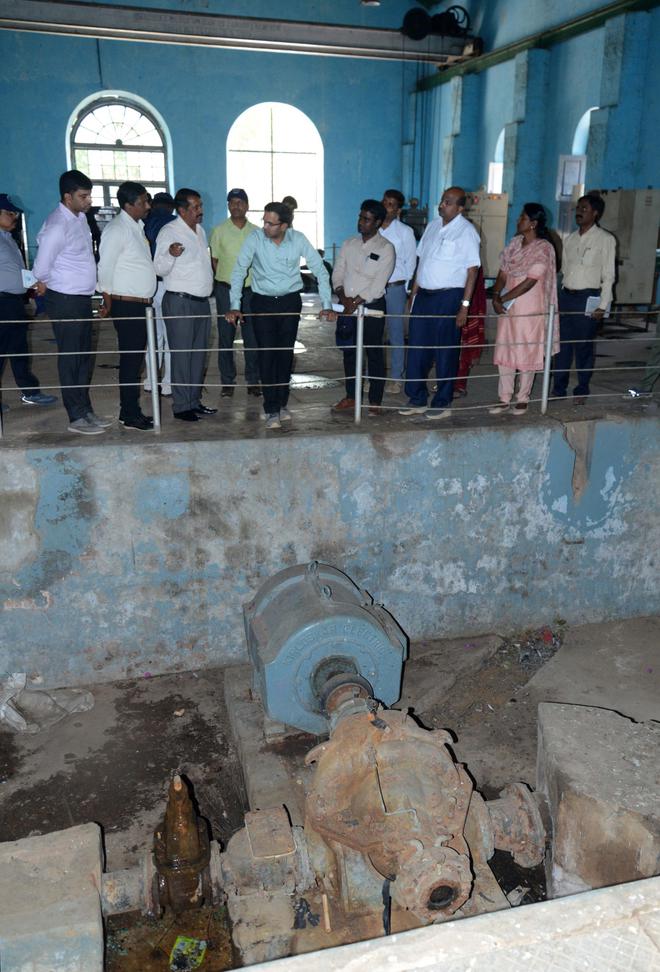The Bangalore Water Supply and Sewerage Board (BWSSB) is all set to revive the Soladevanahalli pumping station, the first-ever water pumping station that was set up in 1896 to supply piped water to Bengaluru from the Arkavathi.
This is a 128-year-old heritage structure that has fallen into disuse. The then Diwan of Mysore State K. Seshadri Iyer oversaw the installation of the station in Soladevanahalli to supply water after Bengaluru reeled under a famine between 1875 and 1877.
The BWSSB now plans to revive the pumping station, following which water from the Hesaraghatta lake will be treated there and pumped to the water storage unit at MEI Layout, and from the unit water will be supplied to parched areas through tankers. Efforts are on to prepare the station for restoration by April 20.
V. Ram Prasath Manohar, Chairman, BWSSB, who recently visited Hesaraghatta, to arrange for 10 MLD water to be pumped from the groundwater aquifer in the area in May to tide over the water crisis at hand, said: “I was awestruck by the technology used 128 years ago. It was built to tide over a drinking water crisis during a famine. We are inspired by this to work effectively to tide over the drinking water crisis the city faces today”.

First pumping station of Bengaluru
Bengaluru was the second city in the country to have an organised water supply system. “In 1873, water was being supplied through a network of tanks. Lakes were used to supply water for both drinking and agricultural purposes. However, sadly all the water sources in the city dried up during the famine of 1875-1877 when the city saw no rains. This led the then rulers of Mysore to look for alternative to distribute water to the city which was growing fast,” Mr. Manohar explained.
Mr. Iyer came up with a plan to provide water from the Arkavathi, channelling it through the Hesaraghatta lake. With the help of engineers and water experts, he designed the Chamarajendra Water Works project and set up the station. For the first time in 1896 water was supplied from the river. This was a revolutionary back then, Mr. Manohar explained.







